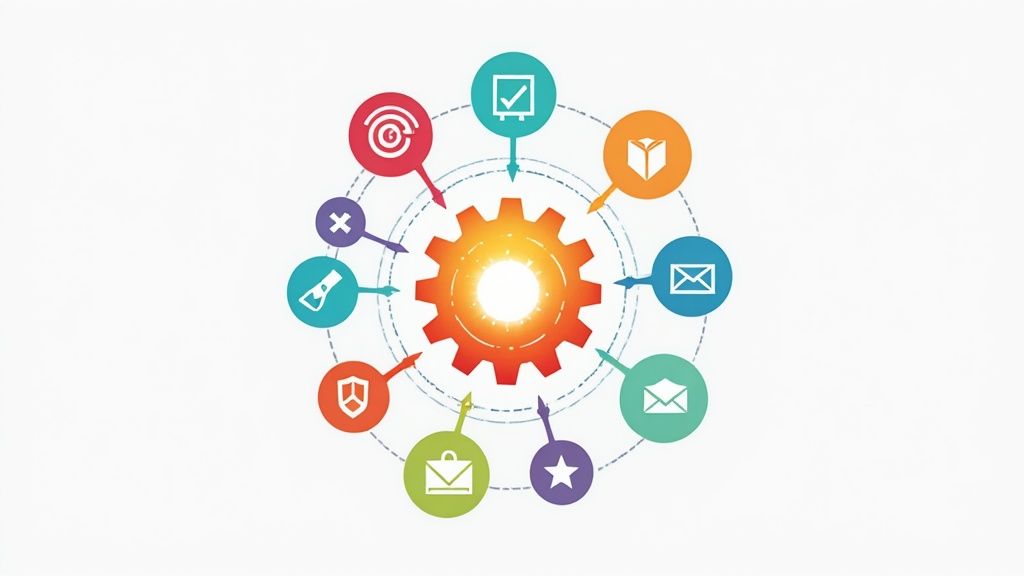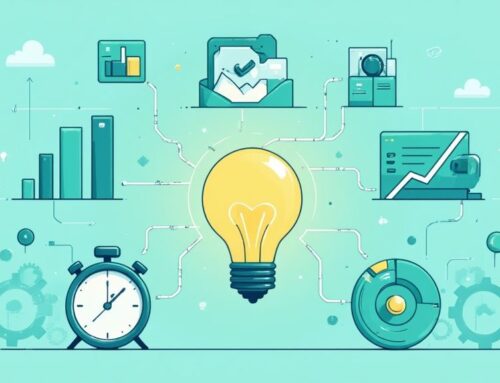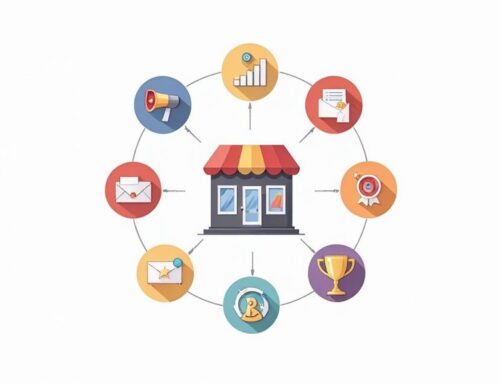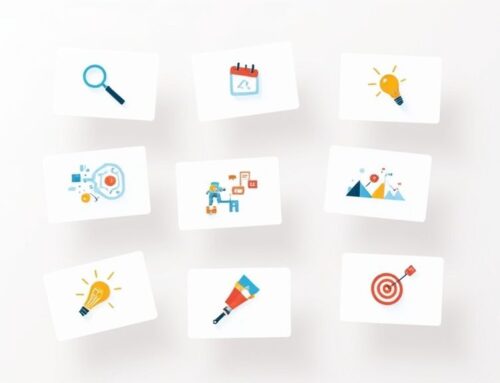Marketing automation is no longer just about sending scheduled emails; it’s the central nervous system of a modern digital strategy. The platforms are more powerful, customer expectations are higher, and the line between efficiency and impersonality is finer than ever. Getting it right means orchestrating seamless customer journeys that feel personal, timely, and genuinely helpful. Getting it wrong leads to disengaged audiences and wasted resources.
This guide moves beyond the basics to deliver a definitive list of the most impactful marketing automation best practices you need to master. We’ll explore the strategic pillars that separate high-growth companies from the rest, focusing on actionable techniques you can implement immediately.
Here, you will learn how to:
- Build hyper-precise audience segments for true personalization.
- Implement intelligent lead scoring to align marketing and sales.
- Map the entire customer journey, from first touch to loyal advocate.
- Optimize every campaign with rigorous A/B testing and analytics.
- Ensure your automation is compliant, ethical, and built for a mobile-first world.
Whether you’re refining an existing system or building a new one from scratch, these nine practices provide a framework for creating a smarter, more effective, and more profitable marketing engine. As a full-service agency, ReachLabs.ai leverages these very principles to help clients integrate world-class talent with data-driven insights, ensuring every automated touchpoint moves the needle. Let’s dive into the strategies that will unlock your company’s true growth potential.
1. Comprehensive Customer Segmentation and Personalization
One of the most foundational marketing automation best practices is to move beyond one-size-fits-all messaging. Comprehensive customer segmentation involves dividing your audience into distinct, smaller groups based on shared characteristics. This allows for hyper-targeted personalization, where you deliver content and offers that resonate deeply with each group’s specific needs, behaviors, and preferences, transforming generic broadcasts into meaningful conversations.

This approach is powerful because it directly addresses customer expectations for relevance. When a message speaks to a person’s individual context, such as their purchase history or recent website activity, it feels less like an advertisement and more like a helpful recommendation. This dramatically increases engagement, builds brand loyalty, and ultimately drives higher conversion rates. Companies like Amazon and Netflix have pioneered this model, using advanced algorithms to suggest products and content so accurately it feels predictive.
How to Implement Effective Segmentation
To apply this practice, start by layering different data types to build a rich customer profile. Don’t feel pressured to implement complex behavioral triggers from day one; a gradual approach is more sustainable.
- Start with the Basics: Begin by segmenting based on readily available demographic data (age, location, gender) and firmographic data for B2B (company size, industry).
- Layer in Behavior: Progress to behavioral segmentation by tracking website interactions (pages visited, content downloaded), email engagement (opens, clicks), and purchase history (last purchase date, average order value).
- Use Progressive Profiling: Instead of asking for all information at once, use smart forms that progressively gather data over multiple interactions. This reduces friction and enriches profiles over time.
- Leverage Dynamic Content: Use your marketing automation platform’s dynamic content features. This allows you to create a single email template where specific content blocks, like images or calls-to-action, change automatically based on the recipient’s segment. For example, a clothing retailer can show winter coats to users in cold climates and swimwear to those in tropical regions within the same email campaign.
By mastering segmentation and personalization, you ensure your automated messages are always timely, relevant, and valuable, forming the cornerstone of a successful automation strategy.
2. Strategic Lead Scoring and Qualification
A critical marketing automation best practice is implementing a strategic lead scoring system. This methodology quantifies a prospect’s sales-readiness by assigning points based on their attributes and actions. It systematically ranks leads, allowing your sales team to focus their energy on prospects who demonstrate the strongest intent to buy, while marketing continues to nurture those who are not yet ready.
This practice is powerful because it bridges the gap between marketing and sales, creating a shared understanding of what constitutes a qualified lead. By automating this qualification process, you ensure high-value leads are fast-tracked to sales for immediate follow-up, dramatically shortening the sales cycle and increasing conversion rates. Platforms like HubSpot and Marketo use this to help B2B companies prioritize thousands of leads, ensuring that sales reps spend their time on conversations that are most likely to result in revenue.
How to Implement Effective Lead Scoring
To build a successful lead scoring model, you need a collaborative approach between marketing and sales. The key is to start simple and refine your model based on real-world data and feedback.
- Align Sales and Marketing: Before assigning any points, hold a workshop with the sales team to define the ideal customer profile (ICP) and identify the key behaviors that correlate with successful deals. This alignment is the foundation of an effective model.
- Establish a Point System: Assign positive scores for desirable attributes (e.g., job title, company size) and high-intent actions (e.g., requesting a demo, visiting a pricing page). Importantly, also use negative scores for disqualifying factors (e.g., a student email address) or disengagement (e.g., unsubscribing).
- Set Clear Thresholds: Define what each score level means. For example, a lead reaching 50 points might become a Marketing Qualified Lead (MQL) ready for nurturing, while a lead hitting 100 points becomes a Sales Qualified Lead (SQL) and is automatically routed to a sales rep.
- Review and Refine Regularly: A lead scoring model is not static. Schedule quarterly reviews to analyze which lead characteristics actually led to closed-won deals. Adjust your point values and criteria based on this data to continuously improve the model’s accuracy and effectiveness.
By mastering strategic lead scoring, you transform your pipeline into a well-oiled machine that intelligently prioritizes effort and maximizes sales efficiency.
3. Multi-Touch Attribution and Data-Driven Analytics
A critical marketing automation best practice is to look beyond single-touch attribution models, like last-click, which oversimplify the customer journey. Multi-touch attribution involves tracking and analyzing all customer touchpoints across multiple channels to understand how each interaction contributes to a conversion. This provides a holistic view, revealing the true impact of your entire marketing mix and enabling smarter, data-driven decisions.

This comprehensive approach is powerful because it stops you from mistakenly cutting budgets for channels that play a vital role early or midway through the buyer’s journey. Instead of only crediting the final ad a customer clicked, you can see how a blog post, a social media ad, and an email newsletter all worked together. Platforms like Google Analytics 4, with its data-driven attribution modeling, and HubSpot, with its cross-channel reporting, have made this level of analysis more accessible, moving it from a luxury to a necessity. To dive deeper, you can explore the fundamentals of what marketing attribution is on reachlabs.ai.
How to Implement Effective Attribution
Adopting a multi-touch attribution model requires a systematic approach to data collection and analysis. Start with the tools already in your marketing stack and expand from there.
- Ensure Proper UTM Tagging: Your first step is to implement a consistent UTM tracking and campaign tagging system. This is the bedrock of attribution, as it allows your analytics platform to correctly identify the source, medium, and campaign for all incoming traffic.
- Set Up Conversion Goals: Clearly define and configure conversion tracking for every important business goal in your analytics and automation platforms. This includes not only final sales but also micro-conversions like newsletter sign-ups or content downloads.
- Start with Built-in Models: Begin by using the standard attribution models available in your tools (e.g., linear, time-decay, position-based) to understand their different perspectives before attempting to create complex custom models.
- Regularly Audit Your Data: Schedule regular audits of your tracking implementation and data quality. Broken tracking codes or inconsistent tagging can corrupt your attribution data, leading to flawed insights and poor strategic decisions. Use these insights to reallocate your budget to the most effective channels.
By integrating multi-touch attribution, you transform your marketing automation from a simple execution engine into an intelligent system that continuously learns and optimizes for maximum ROI.
4. Advanced Drip Campaigns and Nurture Sequences
One of the most effective marketing automation best practices is leveraging advanced drip campaigns to guide prospects through their journey. These are not just simple, time-based email sequences; they are sophisticated nurture workflows that deliver the right content at the right time. By moving beyond a fixed schedule and using behavioral triggers, you can create a dynamic experience that adapts to each user’s actions, effectively nurturing them from initial awareness to a state of purchase-readiness.
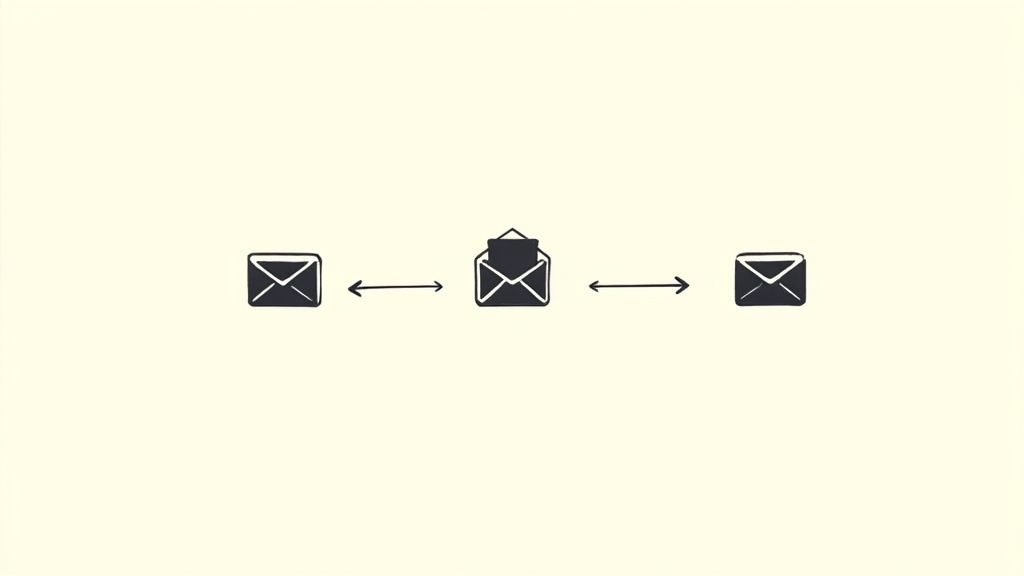
This approach is powerful because it keeps your brand top-of-mind without being intrusive. Instead of sending generic follow-ups, you provide genuine value that helps solve a prospect’s problems and builds trust. For example, platforms like ActiveCampaign and Klaviyo enable complex workflows, such as e-commerce abandoned cart sequences that send a reminder, followed by a social proof email, and finally a small discount to recover the sale. This strategic progression makes communication feel helpful and timely, significantly boosting conversion rates and customer loyalty. You can explore more strategies for lead nurturing automation to enhance your campaigns.
How to Implement Effective Nurture Sequences
To build drip campaigns that convert, focus on the user’s journey and intent. A thoughtful, trigger-based approach will outperform a static one every time.
- Map Content to the Buyer’s Journey: Align each email in your sequence with a specific stage: awareness, consideration, or decision. An awareness email might share a blog post, a consideration email could offer a case study, and a decision stage email may feature a demo or a trial offer.
- Use Behavioral Triggers: Go beyond time delays. Trigger emails based on actions like visiting a pricing page, downloading a specific resource, or clicking a link in a previous email. This ensures your message is directly relevant to their current interest.
- Include Clear, Stage-Appropriate CTAs: Every email should have a clear call-to-action (CTA). Early-stage CTAs might be “Read More” or “Download the Guide,” while later-stage CTAs could be “Request a Quote” or “Start Your Free Trial.”
- Test and Refine Continuously: A/B test different sending frequencies, times of day, subject lines, and content. Regularly review performance metrics to identify drop-off points and optimize the sequence, ensuring your content remains fresh and effective.
5. Marketing and Sales Alignment (Smarketing)
True marketing automation success extends beyond the marketing department; it requires deep integration with sales. This alignment, often called “smarketing,” involves uniting marketing and sales teams around shared goals, processes, and data. The objective is to create a seamless, cohesive journey for the customer, from the initial touchpoint to the final sale and beyond, eliminating friction and missed opportunities.
This practice is powerful because it breaks down traditional silos that often cause leads to fall through the cracks. When marketing generates a lead and “throws it over the wall” to sales without context, the conversion potential plummets. In a smarketing model, marketing automation nurtures leads until they are sales-ready, and sales provides crucial feedback on lead quality. This closed-loop system ensures that marketing efforts are directly tied to revenue, a key element of effective marketing automation best practices. Companies that excel at this, like HubSpot and Salesforce, build their platforms around this very concept of a unified customer view.
How to Implement Smarketing
Achieving alignment requires a commitment to shared processes and open communication, supported by integrated technology. The goal is to create a single, unified revenue team.
- Establish Shared Definitions: Start by getting both teams to agree on a universal definition for each stage of the funnel. What constitutes a Marketing Qualified Lead (MQL)? What specific actions or data points elevate an MQL to a Sales Qualified Lead (SQL)? Document these definitions in a Service Level Agreement (SLA).
- Create a Feedback Loop: Implement a clear process for the sales team to provide feedback on the leads they receive from marketing. This can be done through CRM fields that sync with your automation platform, allowing sales to mark leads as “unqualified” and provide a reason, which helps marketing refine its targeting and messaging.
- Implement Integrated Technology: Use a marketing automation platform and CRM that integrate seamlessly. This ensures that both teams are working from the same dataset. A salesperson should be able to see a lead’s entire history of marketing interactions, such as emails opened, content downloaded, and pages visited, right within the CRM.
- Hold Regular Smarketing Meetings: Schedule weekly or bi-weekly meetings with key stakeholders from both teams. Use this time to review shared dashboards, discuss lead quality, celebrate wins, and troubleshoot challenges. For a deeper look into building this collaboration, you can learn more about Marketing and Sales Alignment on reachlabs.ai.
By systematically aligning your marketing and sales functions, you transform your marketing automation engine into a true revenue-generation machine.
6. Lifecycle Marketing and Customer Journey Mapping
Effective marketing automation goes beyond single campaigns; it orchestrates a cohesive experience across the entire customer relationship. Lifecycle marketing is a strategic approach that involves creating targeted automated campaigns for each stage of the customer lifecycle, from initial awareness and discovery through purchase, onboarding, retention, and ultimately, advocacy. This practice is built on a deep understanding of the customer journey, ensuring that every message is not just personalized but also perfectly timed to guide the customer smoothly to the next stage.
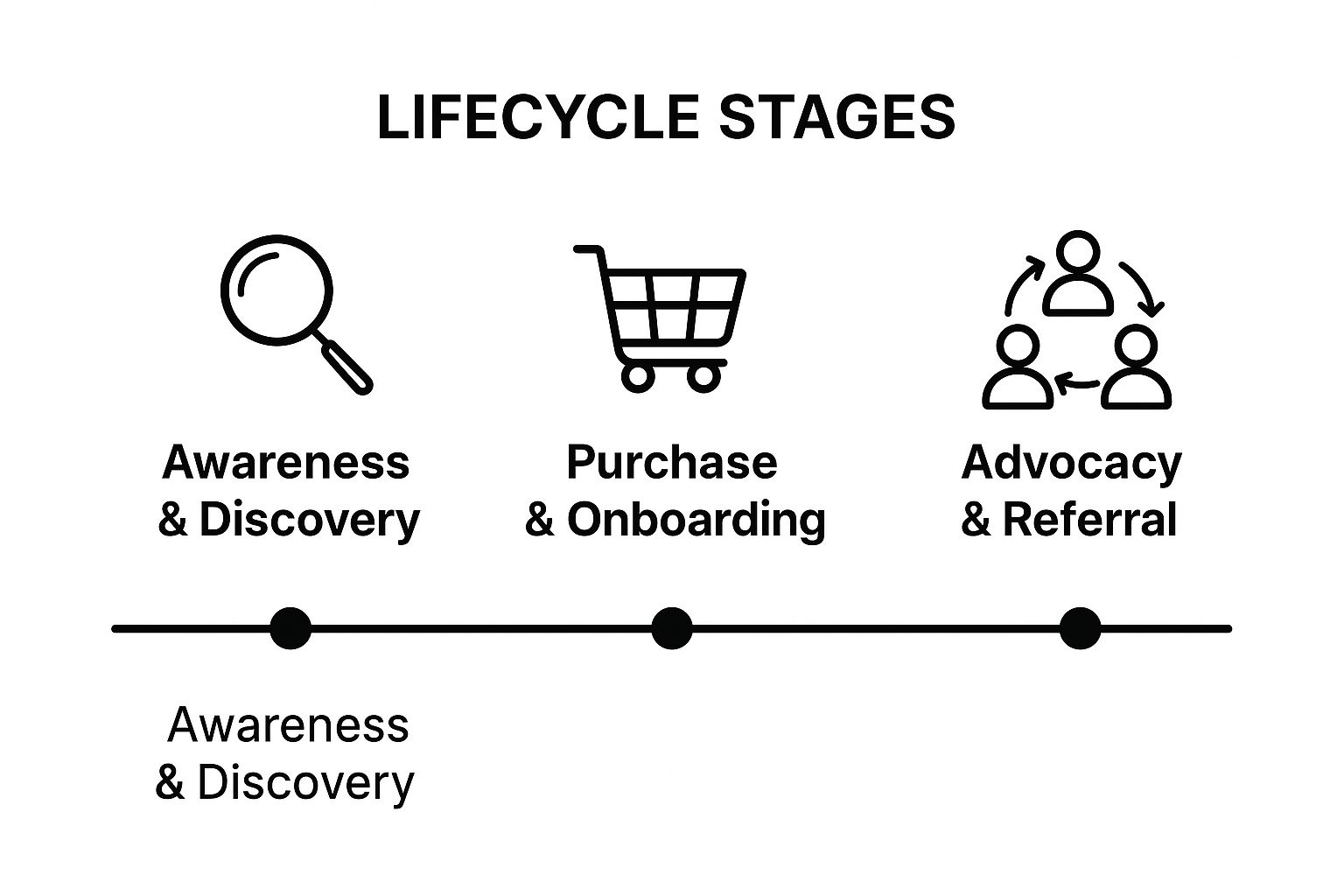
The power of this method lies in its proactive, customer-centric nature. Instead of reacting to individual actions, you anticipate customer needs based on where they are in their journey. This prevents disjointed experiences, such as sending an introductory offer to a loyal, long-term customer. Leading platforms like Salesforce Journey Builder and Adobe Experience Cloud enable businesses to map and automate these complex, multi-channel paths, creating seamless interactions that build trust and long-term value.
How to Implement Lifecycle Journey Mapping
Implementing a lifecycle strategy requires a shift from a campaign-focused mindset to a customer-focused one. It begins with understanding the path your customers currently take and then optimizing it with automation.
- Map the Current State: Begin by charting out your existing customer journey using real data. Interview sales and support teams, analyze website analytics, and use customer feedback to identify all key touchpoints, from the first ad they see to their 10th purchase.
- Identify Moments That Matter: Pinpoint the critical moments and potential friction points within the journey. Where do prospects drop off? What actions signal a customer is at risk of churning? These are the moments where automated interventions can have the biggest impact.
- Develop Stage-Specific Content: Create a library of content tailored to each lifecycle stage. An awareness-stage lead needs educational blog posts or guides, while a post-purchase customer would benefit from onboarding tutorials, usage tips, or a request for a review.
- Automate Journey Progression: Use your marketing automation platform to build workflows that trigger based on lifecycle stage entry and exit criteria. For example, when a user makes their first purchase, automatically move them from a “prospect” segment to a “new customer” segment and enroll them in an onboarding email sequence. This is a core component of many marketing automation best practices.
7. Comprehensive A/B Testing and Optimization
A core principle of successful marketing automation is to never assume you know what works best. Comprehensive A/B testing, also known as split testing, is the practice of systematically comparing two versions of a marketing asset to see which one performs better. This data-driven approach removes guesswork from your strategy, allowing you to optimize everything from email subject lines and send times to landing page layouts and entire workflow logic.
The power of this practice lies in its ability to generate incremental gains that compound over time. A small 5% lift in email open rates or a 2% increase in landing page conversions might seem minor, but when applied across thousands of interactions, the impact on revenue and lead quality is substantial. Platforms like Optimizely and VWO have built entire businesses around this concept, empowering marketers to make informed, evidence-backed decisions that continuously improve key performance metrics.
How to Implement Effective A/B Testing
Integrating A/B testing into your marketing automation best practices requires a methodical approach to ensure your results are reliable and actionable.
- Test One Variable at a Time: To get clear, unambiguous results, only change one element between your two versions (the control and the variant). For example, test a different headline or a different call-to-action button color, but not both simultaneously.
- Ensure Statistical Significance: Don’t end tests prematurely. Use a large enough sample size and run the test long enough to be confident that the results aren’t due to random chance. Many automation tools have built-in statistical significance calculators.
- Focus on High-Impact Elements: Prioritize tests on assets that have the most significant potential to affect your goals. Start with email subject lines, call-to-action (CTA) copy and design, landing page headlines, and key form fields.
- Document and Learn: Create a central repository or spreadsheet to log every test you run, including your hypothesis, the variants, the results, and the key takeaways. This creates an invaluable knowledge base that prevents repeating mistakes and informs future campaign strategies.
8. Privacy Compliance and Ethical Data Management
In an era of heightened data sensitivity, one of the most critical marketing automation best practices is prioritizing privacy compliance and ethical data management. This involves building your automation strategies on a foundation of trust, ensuring all data collection, storage, and usage practices comply with regulations like GDPR and CCPA. It means moving beyond a purely legal obligation to an ethical commitment to protect customer information and provide transparency.
Adopting a privacy-first approach is no longer optional; it is a competitive differentiator. Customers are more likely to engage with and remain loyal to brands that respect their privacy. Demonstrating ethical data handling through clear consent mechanisms and transparent policies builds immense brand equity and mitigates the significant financial and reputational risks associated with non-compliance. Companies like Apple have made privacy a core part of their brand identity, influencing consumer expectations across the digital landscape.
How to Implement Ethical Data Management
Integrating privacy into your automation workflows requires a proactive and systematic approach. It’s about embedding privacy controls into every stage of the customer journey, from the first touchpoint to ongoing communication.
- Implement Double Opt-In: Make double opt-in the default for all email and SMS subscriptions. This confirms genuine interest and creates an auditable record of consent, forming a cornerstone of compliant list-building.
- Provide Clear and Easy Opt-Outs: Ensure every automated communication includes a straightforward, one-click unsubscribe link. Hiding or complicating this process erodes trust and violates regulations like the CAN-SPAM Act.
- Conduct Regular Privacy Audits: Periodically review your data collection points, storage security, and third-party integrations. Use tools like OneTrust or TrustArc to automate compliance checks and identify potential vulnerabilities in your marketing stack.
- Anonymize Data for Analytics: When possible, use anonymized or aggregated data for performance analysis. This allows you to gather valuable insights on campaign effectiveness without compromising individual user privacy.
- Train Your Team: Ensure every team member who interacts with your marketing automation platform understands their responsibilities regarding data privacy. Regular training on regulations and internal policies is essential for maintaining compliance.
9. Mobile-First and Cross-Channel Integration
In an era where consumers switch between devices constantly, prioritizing mobile optimization and integrating communication across channels is no longer optional. This marketing automation best practice involves designing every campaign with a mobile-first mindset and ensuring a seamless, consistent user experience across email, SMS, push notifications, social media, and in-app messages. It acknowledges that the customer journey is not linear and requires a unified strategy that adapts to the user’s context and preferred channel.
This approach is critical because a disjointed experience can quickly lead to frustration and unsubscribes. When a user receives an email that is unreadable on their phone or gets repetitive messages on different platforms, it signals a lack of coordination and disregard for their experience. A successful cross-channel strategy, however, makes interactions feel intuitive and cohesive, strengthening brand perception and encouraging continued engagement no matter the touchpoint. Platforms like Braze and Airship have built their entire models around this mobile-centric, multi-channel philosophy.
How to Implement a Cross-Channel Strategy
To apply this practice effectively, you must think of channels not as silos, but as interconnected parts of a single conversation. A well-orchestrated strategy respects user preferences and context.
- Design for Mobile First: Always start your design process on the smallest screen. This forces you to prioritize essential content and ensure that emails, landing pages, and forms are fully responsive and easy to navigate on a smartphone before adapting them for larger screens.
- Respect Channel Preferences: Use your automation platform to track and honor user preferences. If a customer engages more with SMS alerts than emails for order updates, your workflows should automatically prioritize that channel for transactional messages.
- Implement Cross-Channel Frequency Capping: To avoid overwhelming your audience, set rules that limit the total number of messages a person can receive across all channels within a specific period. This prevents sending an email, a push notification, and an SMS about the same promotion all at once.
- Maintain Brand and Message Consistency: While the format may change per channel (e.g., a concise SMS vs. a detailed email), the core message, tone, and branding must remain consistent. This reinforces brand identity and creates a predictable, trustworthy experience for the user.
Best Practices Comparison Matrix for Marketing Automation
| Practice | Implementation Complexity 🔄 | Resource Requirements ⚡ | Expected Outcomes 📊 | Ideal Use Cases 💡 | Key Advantages ⭐ |
|---|---|---|---|---|---|
| Comprehensive Customer Segmentation and Personalization | High – complex setup and ongoing maintenance | High – advanced tools and significant data | Improved open rates, conversions, revenue, satisfaction | Targeted marketing, personalized customer engagement | Higher engagement, efficient spend, real-time personalization |
| Strategic Lead Scoring and Qualification | Medium to High – requires cross-team collaboration | Medium – data and CRM integrations | Better sales efficiency, prioritization of leads | Sales lead prioritization and qualification | Improved conversion, marketing-sales alignment |
| Multi-Touch Attribution and Data-Driven Analytics | High – technical expertise required | High – needs large data volume and analytics tools | Holistic customer journey insights, accurate ROI measurement | Budget allocation, multi-channel performance analysis | Comprehensive journey view, data-driven decisions |
| Advanced Drip Campaigns and Nurture Sequences | Medium – content creation and automation setup | Medium – content and multi-channel tools | Automated nurturing, improved conversion rates | Lead nurturing, timed engagement sequences | Scalable personalization, consistent communication |
| Marketing and Sales Alignment (Smarketing) | Medium – cultural and process changes required | Medium – shared tech and ongoing meetings | Increased conversion rates, smoother handoffs | Enhancing marketing-sales collaboration | Better lead quality, consistent messaging |
| Lifecycle Marketing and Customer Journey Mapping | High – complex integration and continuous updates | High – broad data and cross-channel coordination | Higher retention and lifetime value, predictive engagement | End-to-end customer lifecycle campaign management | Relevant experiences, maximized customer value |
| Comprehensive A/B Testing and Optimization | Medium – requires statistical knowledge | Medium – testing platforms and sample sizes | Continuous performance improvement, data-driven insights | Campaign optimization, incremental gains | Reduced guesswork, culture of learning |
| Privacy Compliance and Ethical Data Management | Medium to High – regulatory knowledge and ongoing updates | Medium to High – compliance tools and training | Legal risk reduction, increased trust, ethical data use | GDPR/CCPA compliance, ethical marketing practices | Trust building, competitive advantage |
| Mobile-First and Cross-Channel Integration | High – coordination across platforms and teams | High – multiple platform integrations | Improved engagement, cohesive brand experience | Multi-device, multi-touch marketing campaigns | Greater reach, real-time targeted messaging |
From Automation to Orchestration: Your Next Steps
Embarking on the path of marketing automation is not about flipping a switch; it’s about fundamentally transforming how you connect with your audience. The journey from manual tasks to a fully orchestrated marketing engine is a marathon, not a sprint. We’ve navigated through a comprehensive set of marketing automation best practices, from the foundational necessity of deep customer segmentation to the critical importance of privacy compliance and ethical data management. These are not isolated tactics to be cherry-picked. Instead, they represent the interconnected pillars of a robust, modern marketing strategy.
The true power of these practices is unlocked when they work in concert. Imagine a system where strategic lead scoring seamlessly informs your advanced drip campaigns, which are in turn personalized using data from meticulous lifecycle mapping. This is the shift from simple automation, which just completes tasks, to sophisticated orchestration, where every touchpoint is harmonized to create a singular, resonant customer experience. This is where your brand transcends noise and builds genuine loyalty.
Synthesizing the Core Principles
To truly master this discipline, it’s essential to distill these extensive practices into core, actionable principles. Think of these as your guiding stars as you implement and refine your strategy:
- Humanity First, Technology Second: The goal of automation is not to replace human connection but to scale it. Use personalization and segmentation not just to improve metrics, but to deliver genuine value and show your customers you understand their needs. Every automated workflow should feel as if it was crafted for the individual receiving it.
- Data as a Compass, Not a Crutch: Your multi-touch attribution models and A/B testing results are your map to success. Rely on this data to make informed decisions, from optimizing email subject lines to reallocating budget across channels. However, remember that data tells you the “what,” while strategic insight tells you the “why.” Always combine quantitative analytics with qualitative understanding.
- Integration is Non-Negotiable: A siloed marketing automation platform is a wasted investment. The most impactful strategies are built on a foundation of tight integration between marketing and sales (smarketing), as well as a seamless experience across all channels, especially mobile. Your customer doesn’t see departments; they see one brand. Your technology and teams should reflect that reality.
Your Actionable Roadmap to Mastery
Moving from theory to practice can feel daunting, but progress is built on incremental, consistent action. Here are your immediate next steps to put these marketing automation best practices into motion:
- Conduct a Tech and Strategy Audit: Start by evaluating your current state. Which of the nine best practices are you currently implementing? Where are the most significant gaps? Assess your tech stack, your data quality, and your team’s skills to identify your most pressing opportunities for improvement.
- Prioritize One High-Impact Area: Don’t try to overhaul everything at once. Choose one area from the list that promises the biggest return for your business. For many, this might be implementing a lead scoring model to improve sales efficiency or mapping a core customer journey to fix a leaky funnel.
- Launch a Pilot Program: Isolate a specific customer segment or campaign to test your new approach. For example, create a new, highly-personalized nurture sequence for a single lead magnet. This allows you to test, learn, and prove ROI on a smaller scale before rolling out changes company-wide.
- Establish a Rhythm of Review and Optimization: True mastery is an ongoing process. Schedule regular meetings (monthly or quarterly) to review your automation performance against your KPIs. Use this time to analyze results, gather feedback from sales, and plan your next set of A/B tests and optimizations.
By adopting this mindset of continuous improvement, you transform marketing automation from a set of tools into a strategic capability. You build a resilient, intelligent system that not only drives conversions but also fosters lasting customer relationships, ensuring your brand thrives in an ever-evolving digital landscape.
Ready to move from theory to implementation and turn these marketing automation best practices into tangible growth? The experts at ReachLabs.ai specialize in designing and executing sophisticated, data-driven automation strategies tailored to your unique business goals. Visit ReachLabs.ai to discover how we can help you build a powerful marketing engine that delivers measurable results.

